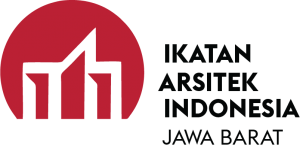Evolusi Peran Arsitek di Era Artificial Intelligence dan Teknologi Berbasis Data
Sari
Abstrak
Meningkatnya kompleksitas dunia menimbulkan tantangan yang signifikan bagi lingkungan binaan, dan arsitek memainkan peran penting dalam menerjemahkan kebutuhan masyarakat yang terus berkembang menjadi solusi yang berkelanjutan. Dengan isu-isu mendesak seperti krisis iklim, urbanisasi, dan kekurangan perumahan, industri arsitektur harus beradaptasi, berevolusi, dan berinovasi untuk memenuhi tuntutan tersebut. Data dan teknologi telah muncul sebagai alat yang ampuh dalam transformasi ini, hal ini memungkinkan arsitek untuk memberikan proyek berorientasi pengguna yang terintegrasi secara komprehensif dengan lingkungan mereka. Penelitian ini mengeksplorasi persimpangan desain berbasis data, kecerdasan buatan (AI), dan arsitektur, termasuk peran data dalam membentuk industri, mulai dari penerapan Building Information Modelling (BIM) hingga solusi berbasis cloud yang memfasilitasi kolaborasi antar pemangku kepentingan. Analisis data menggunakan literature review mencakup artikel dengan fokus pada artificial intelligence, data driven technology, dan building information modelling (BIM) dalam arsitektur. Sintesis menunjukkan integrasi AI dalam arsitektur memberdayakan para profesional untuk menggali potensi desain berbasis data dan AI sebagai kekuatan transformatif dalam industri arsitektur, serta menciptakan solusi yang lebih baik dan efisiensi dalam pengambilan keputusan yang terinformasi di seluruh desain, konstruksi, dan pengoperasian bangunan.
ÂTeks Lengkap:
PDFReferensi
S. Abrishami, J. Goulding, and F. Rahimian, “Generative BIM workspace for AEC conceptual design automation: prototype development,†Eng. Constr. Archit. Manag., vol. 28, no. 2, pp. 482–509, Jul. 2020, doi: 10.1108/ECAM-04-2020-0256.
Enjellina, E. V. P. Beyan, and Anastasya Gisela Cinintya Rossy, “Review of AI Image Generator: Influences, Challenges, and Future Prospects for Architectural Field,†J. Artif. Intell. Archit., vol. 2, no. 1, pp. 53–65, Feb. 2023, doi: 10.24002/jarina.v2i1.6662.
J. Ayuso Sanchez, T. Ikaga, and S. Vega Sanchez, “Quantitative improvement in workplace performance through biophilic design: A pilot experiment case study,†Energy Build., vol. 177, pp. 316–328, Oct. 2018, doi: 10.1016/j.enbuild.2018.07.065.
D. Newton, “Generative Deep Learning in Architectural Design,†Technol. + Des., vol. 3, no. 2, pp. 176–189, Jul. 2019, doi: 10.1080/24751448.2019.1640536.
J. Zhang, N. Liu, and S. Wang, “Generative design and performance optimization of residential buildings based on parametric algorithm,†Energy Build., vol. 244, p. 111033, Aug. 2021, doi: 10.1016/j.enbuild.2021.111033.
T. Ahmad, R. Madonski, D. Zhang, C. Huang, and A. Mujeeb, “Data-driven probabilistic machine learning in sustainable smart energy/smart energy systems: Key developments, challenges, and future research opportunities in the context of smart grid paradigm,†Renew. Sustain. Energy Rev., vol. 160, p. 112128, May 2022, doi: 10.1016/j.rser.2022.112128.
T. Hong, Z. Wang, X. Luo, and W. Zhang, “State-of-the-art on research and applications of machine learning in the building life cycle,†Energy Build., vol. 212, p. 109831, Apr. 2020, doi: 10.1016/j.enbuild.2020.109831.
A. Nightingale, “A guide to systematic literature reviews,†Surg., vol. 27, no. 9, pp. 381–384, Sep. 2009, doi: 10.1016/j.mpsur.2009.07.005.
N. Donthu, S. Kumar, D. Mukherjee, N. Pandey, and W. M. Lim, “How to conduct a bibliometric analysis: An overview and guidelines,†J. Bus. Res., vol. 133, pp. 285–296, Sep. 2021, doi: 10.1016/j.jbusres.2021.04.070.
T. Dounas, D. Lombardi, and W. Jabi, “Framework for decentralised architectural design BIM and Blockchain integration,†Int. J. Archit. Comput., vol. 19, no. 2, pp. 157–173, Jun. 2021, doi: 10.1177/1478077120963376.
G. Bastos Porsani, K. Del Valle de Lersundi, A. Sánchez-Ostiz Gutiérrez, and C. Fernández Bandera, “Interoperability between Building Information Modelling (BIM) and Building Energy Model (BEM),†Appl. Sci., vol. 11, no. 5, p. 2167, Mar. 2021, doi: 10.3390/app11052167.
S. Bakhshi, M. R. Chenaghlou, F. Pour Rahimian, D. J. Edwards, and N. Dawood, “Integrated BIM and DfMA parametric and algorithmic design based collaboration for supporting client engagement within offsite construction,†Autom. Constr., vol. 133, p. 104015, Jan. 2022, doi: 10.1016/j.autcon.2021.104015.
M. Bhatt, J. Suchan, C. Schultz, V. Kondyli, and S. Goyal, “Artificial Intelligence for Predictive and Evidence Based Architecture Design,†Proc. AAAI Conf. Artif. Intell., vol. 30, no. 1, Mar. 2016, doi: 10.1609/aaai.v30i1.9850.
V. Krausková and H. Pifko, “Use of Artificial Intelligence in the Field of Sustainable Architecture: Current Knowledge,†Archit. Pap. Fac. Archit. Des. STU, vol. 26, no. 1, pp. 20–29, Mar. 2021, doi: 10.2478/alfa-2021-0004.
M. Day, “Autodesk Forma: a deep dive into the data lake,†AECMAGAZINE, Jun. 05, 2023.
DOI: https://doi.org/10.26760/terracotta.v5i1.10619
Refbacks
- Saat ini tidak ada refbacks.
ISSN elektronik 2716-4667
Diterbitkan oleh :
Program Studi Arsitektur, Institut Teknologi Nasional Bandung
Alamat : Gedung 17 Lantai 1 Jl. PHH. Mustofa 23 Bandung 40124
Kontak : Tel. 7272215 (ext. 151) Fax. 7202892
Email : terracotta@itenas.ac.id
Terindeks :
Didukung Oleh :
1.png)

Kerja Sama :
Jurnal ini terlisensi oleh Creative Commons Attribution-ShareAlike 4.0 International License.






